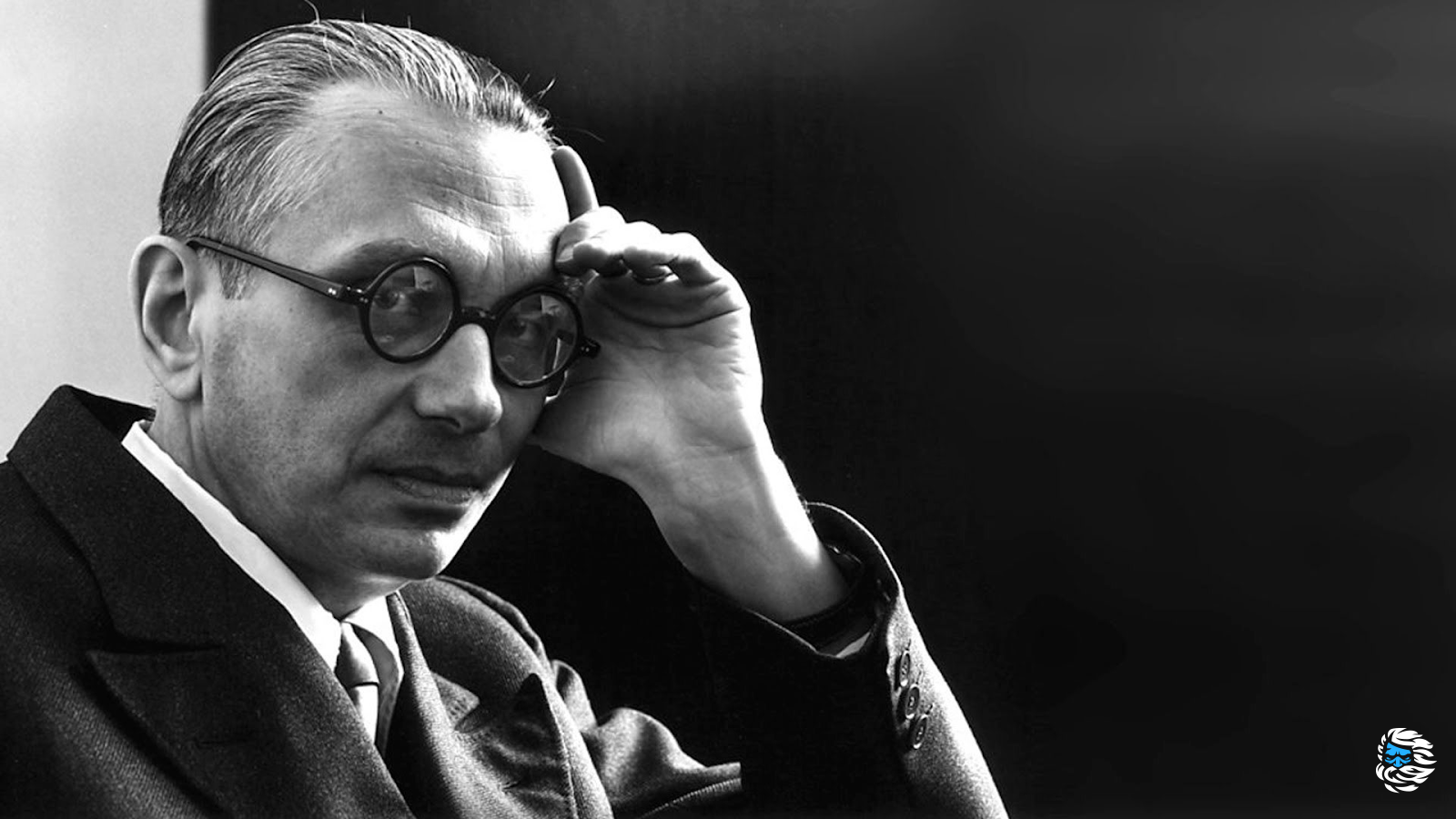
“The achievements of Kurt Gödel in modern logic are unique and monumental. Definitely, this is something more than a monument to a scientist, it is a guiding star, the light of which will continue to spread in space and time forever. "
John von Neumann
On the eve of its death, the Austro-Hungarian Empire gave humanity many great minds. Such big names as Erwin Schrödinger, Sigmund Freud and Stefan Zweig are known, perhaps, to everyone, including even those who are infinitely far from the world of physics, psychoanalysis or classical literature. Not many are familiar with the work of Kurt Gödel, although the scale of his contribution to mathematics is comparable to that of Einstein in the field of physics. After all, if the theory of relativity and quantum theory helped mankind look from a completely different angle at the laws of the universe, then Gödel's theorems forced scientists to reconsider their ideas about scientific methodology and the principles of the human mind.
Logic as a way of life
Kurt Friedrich Gödel was born on April 28, 1906 in the Austro-Hungarian city of Brunn (now the statutory city of the Czech Republic Brno), the son of an Austrian merchant Rudolf August Gödel, who runs a large textile factory. Although Kurt from childhood showed remarkable abilities for languages (even in his early youth he mastered English and French, having learned to speak them no worse than his native German), however, his career as a linguist did not appeal to him. After graduating from school in 1923, the young man entered the University of Vienna, the first two courses of which he devoted to the study of physics, but then switched to mathematics, which was largely facilitated by reading Bertrand Russell's book "Introduction to the Philosophy of Mathematics."
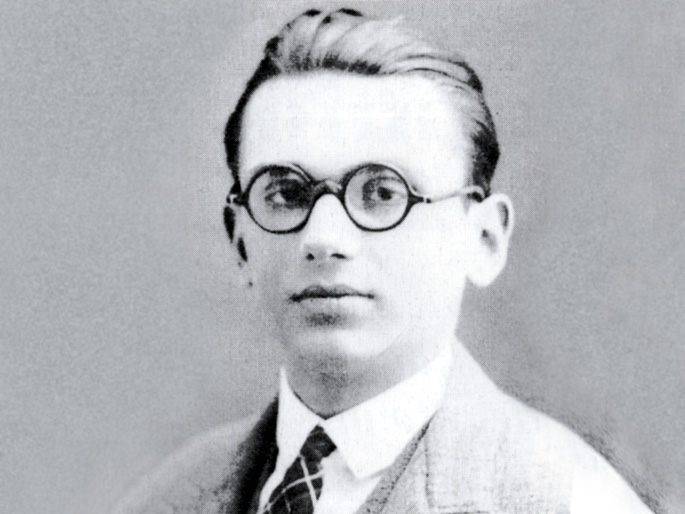
Young Kurt Gödel, 1925
The Vienna Philosophical Circle of Neopositivists, created under the leadership of Moritz Schlick, Professor of the Department of Inductive Sciences, had no less influence on the formation of Kurt Gödel as a scientist. At various times, the philosopher and logician Rudolf Carnap, the sociologist and economist Otto Neurath, the philosopher Herbert Feigl, the mathematician and mechanic Richard von Mises, and many other prominent scientists of the early 20th century, took part in the work of the Vienna Circle.
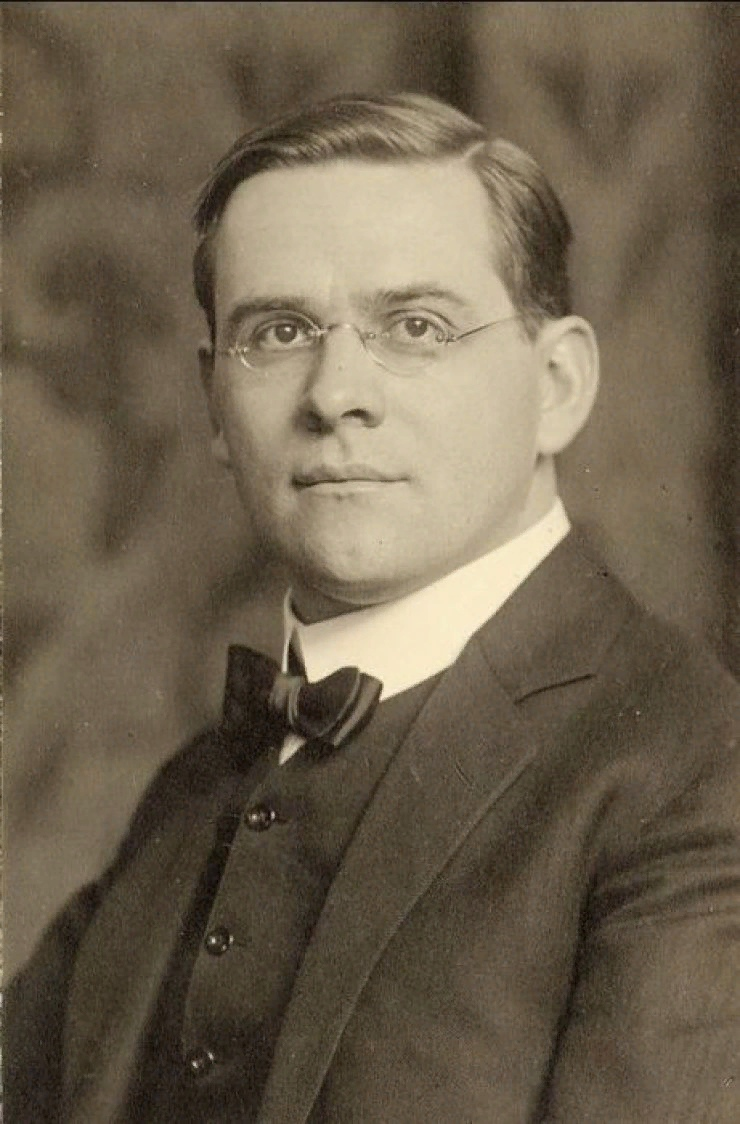
German-Austrian philosopher, founder of the Vienna Circle Moritz Schlick
Since 1926, Kurt Gödel has never missed a single “Thursday” seminar of the Vienna Circle and participated in all international conferences organized by its founders. The young man showed particular interest in such areas as mathematical logic and proof theory. However, a key role in his further scientific career was played by a visit to the Eighth International Congress of Mathematicians, held in Bologna in 1928, where Gödel was lucky to listen to a lecture by David Hilbert himself on the completeness and consistency of axiomatic systems. The study of this problem formed the basis of Kurt's future scientific work: in 1930, Gödel brilliantly defended his dissertation "On the Completeness of Logical Calculus", at the same time making one of the greatest discoveries in the history of mathematics.
It may seem that a person of this kind of mind should have been an inveterate materialist, but this is not at all the case. Unlike many of his colleagues, Gödel remained a theist until the end of his life, although he did not identify himself with any of the existing denominations. A scientist once formulated 14 basic principles and beliefs that underlie his own worldview:
- The world is reasonably arranged.
- In principle, by following certain techniques, a person is able to develop their mental abilities to a higher level.
- There are systematic methods for solving any problem.
- There are other worlds and other intelligent beings, including those of a higher order.
- The world in which we live is not the only world in which we will live or have lived in the past.
- The amount of what can be learned a priori is immeasurably greater than what is known at the moment.
- .
- .
- .
- .
- , .
- .
- () , ; .
- , — .
To some, Gödel's peculiar "scientific faith" may seem contradictory or even chaotic. But everything falls into place if you understand the main principle, following which the great mathematician built the foundation of the surrounding reality brick by brick. At the forefront, he always put the possibility of logical substantiation of one theory or another, meekly rejecting any conflicting concepts, regardless of their status.
In this regard, Gödel's attitude to the evolutionary teaching of Charles Darwin, generally recognized in scientific circles, is very indicative - the mathematician found it completely untenable.
"The complexity of living organisms should be determined either by the complexity of the 'material' of which they are composed, or by the complexity of the laws by which they develop."
Gödel rejected the very possibility of the spontaneous emergence of such complex systems, which are living organisms, from elementary components, or the development of more perfect forms of life from primitive ones. Indeed, from the point of view of logic, the very idea of turning the simple into the complex contradicts common sense. Although a couple of exceptions to this rule still exist: such metamorphoses become possible if the world is structured and organized so complexly that its laws themselves contribute to the consistent ordering and complication of a living mother, or someone deliberately directs and controls evolutionary processes that it is just an indirect proof of the existence of some higher power.
It is worth noting that the innate desire for logical comprehension of the world did not always benefit the scientist. Admirers of Mark Zakharov's work will probably remember the scene from the movie "That very Munchausen", in which the baron thwarted his own divorce proceedings, putting down a nonexistent date in the documents - May 32. The great mathematician himself almost found himself in a similar situation: if Munchausen suffered because of his love for the truth (according to the plot of the film, an extra day was his astronomical discovery), then Kurt Gödel was almost let down by his impeccable logic.
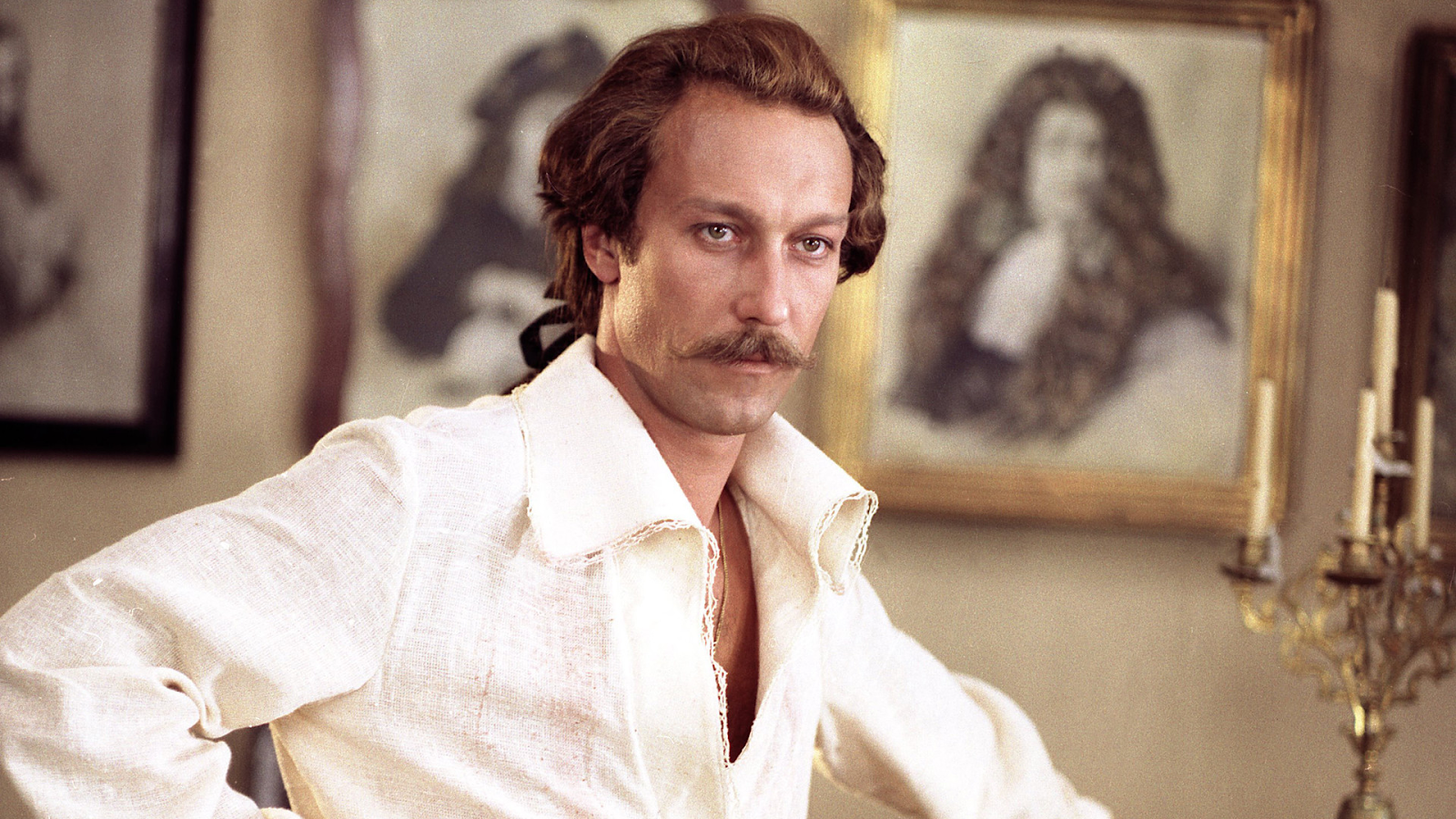
Like Baron Munchausen, Kurt Gödel almost suffered for his convictions.This
happened in 1940, when, after the Anschluss, Gödel, like many of his colleagues, was forced to emigrate to the United States, where he later became a professor at the Princeton Institute for Advanced Study. In accordance with the regulations for obtaining American citizenship, each applicant had to pass something like an oral exam, demonstrating their knowledge of the main provisions of the US Constitution. Gödel approached the study of the highest normative legal act of the United States of America with all his inherent scrupulousness, but after analyzing what he read, the scientist came to an unexpected conclusion: as it turned out, in the "most democratic country in the world" it is absolutely legal to establish a dictatorship by ... nationwide voting.
Such a resonant discovery almost cost Kurt Gödel citizenship, but Albert Einstein, a close friend and one of the scientist's guarantors, was able to persuade the mathematician to postpone political discussions at least until the moment of taking the oath. He heeded the admonitions and successfully passed the exam, and later never returned to this topic. Interestingly, a quarter of a century later, the American economist and Nobel laureate Kenneth Joseph Arrow came to similar conclusions, formulating the theorem on the impossibility of democracy as a collective choice, also known as the "dictator's inevitability theorem."
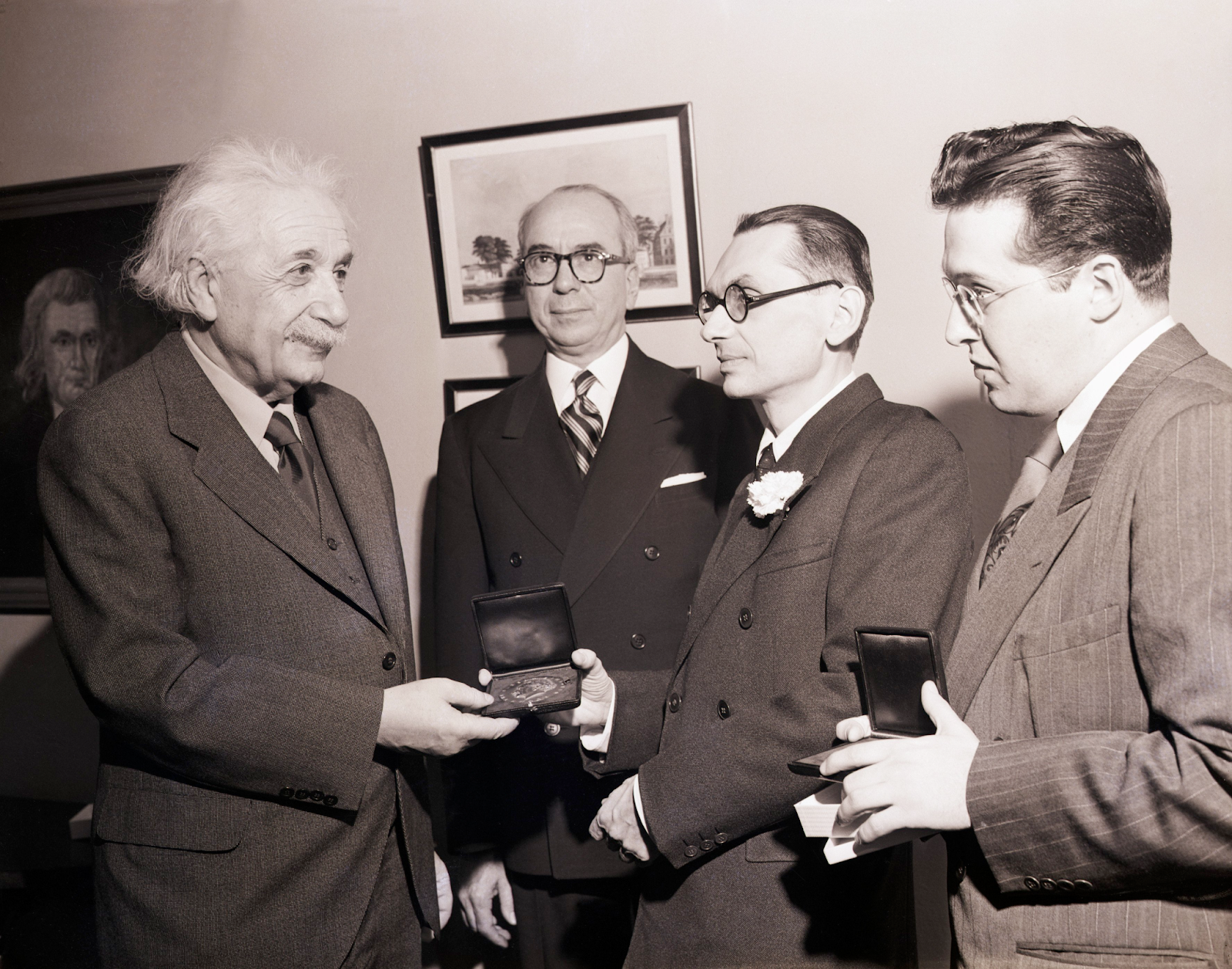
Albert Einstein presents Kurt Gödel and Julian Schwinger with the Einstein Prize medals, 1951
Probably only a person like Kurt Gödel, who put logic and rationalism even above his own interests, could make a discovery that made scientists radically reconsider their views on the structure of the universe, overnight to the dust of the hopes of many of his fellow mathematicians for a total formalization of the science of numbers, and of science in general. And now that you have a better idea of what was the way of thinking of Kurt Gödel and what logic meant to him, you can proceed to the story about the main intellectual brainchild of the scientist - the theorems of incompleteness and inconsistency, which reveal the essence of the fundamental limitations of any of the existing formal systems.
Formalization of the universe
Despite its considerable age, the "Beginnings" of the ancient Greek scientist Euclid, written about 300 BC, and to this day are a model of the logical presentation of mathematical theory, and any scientific theory in general. Many of the greatest minds of mankind, including Rene Descartes, Isaac Newton and Benedict Spinoza, took the structure of the "Elements" as the basis for their work, and today the deductive approach to the presentation of knowledge is used in the compilation of almost every school or university textbook.

Ancient Greek mathematician Euclid, the "father" of classical geometry
Despite this, Euclid's monumental work was by no means perfect, as even his contemporaries noted. With the further development of mathematical science, the number of identified shortcomings of the "Elements" only grew, which, however, was quite natural: over time, the approaches to the axiomatics and methodology of substantiating theorems both in geometry and in arithmetic only improved, and the original text of Euclid, to everything by the way, it was not devoid of many shortcomings, the roots of which lay in the ancient tradition. So, for example, the ancient Greek mathematicians with enviable stubbornness avoided the concept of actual infinity, due to which all the geometric patterns in the "Elements" were described in relation to a limited area of the plane. This, on the one hand, made their formulations unnecessarily cumbersome and, at the same time, significantly limited the scope for further reasoning, as, for example, in the case of the parallel line axiom.
At the end of the 19th century, all the problems and contradictions of the Euclidean "Elements" were resolved by David Hilbert, who presented in 1899 the monumental work "Foundations of Geometry". The success of the German mathematician inspired many of his contemporaries, prompting them to work with a vengeance in the direction of the total formalization of mathematical science.
The very idea of this has been in the air for the past several decades. Back in 1889, the Italian mathematician Giuseppe Peano used Euclid's approach, but not in relation to geometry, but to arithmetic, formulating 5 basic axioms of the natural series of numbers:
- In the set of natural numbers N, there is a natural number 1, called a unit.
- Each natural number n is immediately followed by a uniquely determined natural number n ', called the next after n.
- The unit, that is, the natural number 1, does not directly follow any natural number.
- Each natural number immediately follows at most one natural number.
- Any subset M from the set N containing one, and together with each number from M containing the next number after it, coincides with the set N.
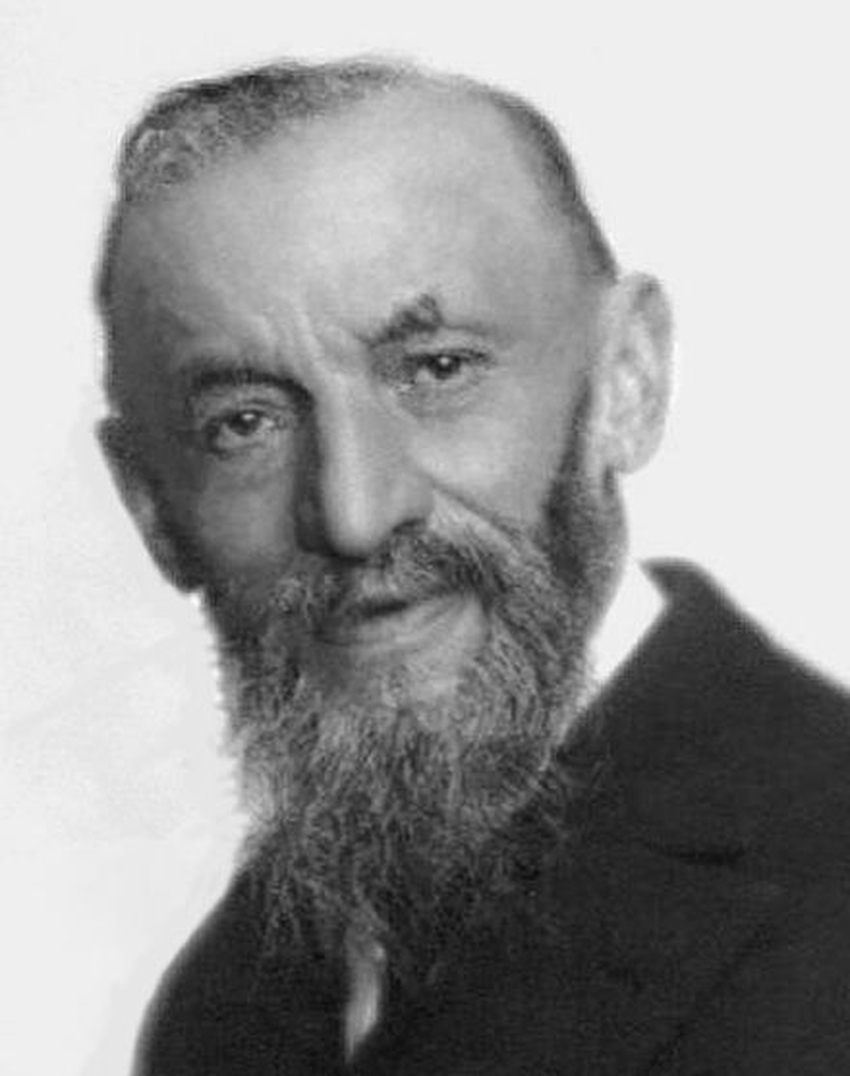
,
Peano's axioms turned out to be as simple as they are exhaustive, because by means of consistent logical inferences they allow one to derive and prove all the basic arithmetic theorems. Peano's work made scientists think about developing a unified approach to the axiomatization of other branches of mathematical science. However, the German logician, mathematician and philosopher Gottlob Frege decided to go even further, proposing not only to axiomatically affirm the basic properties of mathematical objects, but also to formalize the methods of reasoning themselves. Frege outlined the results of his work in this direction in the two-volume Basic Laws of Arithmetic, the first book of which was published in 1893, while the second was published only 10 years later. But even in spite of the tremendous work done by Frege, his final work had a very significant flaw.

German logician, mathematician and philosopher Gottlob Frege
Not long before the publication of the second volume of "The Basic Laws of Arithmetic", the scientist received a letter from his British colleague, Bertrand Russell, in which he pointed out one circumstance that the mathematician had overlooked. The formal system proposed by Frege contained a paradox in the part concerning Georg Cantor 's naive set theory . In an informal language, its essence can be expressed as follows.
Let us agree to call a set that is not its own element "ordinary". This, for example, can be attributed to the audience of Habr: this set is the totality of all readers of the portal, but it is not a reader itself. An "unusual" plurality will be such a plurality that is its own element. These include the set of all sets, since since it includes in general all existing sets, then it must itself be an element of itself.
Now let's imagine a set consisting of all ordinary sets (it will be called Russell's) and try to figure out whether it refers to ordinary or unusual. It cannot be ordinary, since by definition it consists of all ordinary sets, which means in this case it must include itself. It turns out that we have before us an unusual multitude. However, in this case, it cannot include itself as an element, since by definition it should consist only of ordinary sets. But if the multitude is not its own element, it becomes ordinary. We get a contradiction.

British logician and mathematician Bertrand Russell
In the days remaining before the publication of the book, Gottlob Frege tried with all his might to solve Russell's paradox by finalizing his formal system, but all his attempts were unsuccessful. As a result, the mathematician had no choice but to add an afterword to the second volume, in which he, in fact, admitted his complete intellectual defeat:
“What could be more terrible for a scientist than to discover that the very basis of his many years, barely completed work, in collapsed overnight? The letter I received from Bertrand Russell put me in such an unenviable position ... "
Subsequently, the mathematician spent a lot of time and effort trying to resolve the paradox within the framework of his own theory, but it was all in vain. For Frege, this turned out to be such a powerful blow that until the end of his days he never wrote a single book.
The paradox was resolved by Russell himself with the help of type theory... Soon the scientist presented his own version of the formal system, covering all branches of mathematics and free from the contradictions known at that time. His work was embodied in the three-volume Principia Mathematica, co-authored with Alfred North Whitehead, published between 1910 and 1913. Subsequently, David Hilbert described this work as "the crown of all numerous efforts to axiomatize mathematics."
However, the results of Russell's research were not enough for Gilbert himself. By 1922, a much more ambitious plan for substantiating mathematical science and its comprehensive formalization had ripened in his head. Hilbert's ideas took shape in the so-called "Göttingen program", which is a list of basic postulates and research required to prove them. Briefly, its essence can be summarized as follows.
Mathematics is a set of consequences derived from the system of primary axioms and is:
- Complete - any mathematical statement can be unequivocally proven or disproved using the rules of mathematics itself;
- Consistent - not a single mathematical statement can be simultaneously proved and refuted without violating the rules of mathematics;
- Decidable - for any mathematical statement, it is possible to unambiguously establish whether it is refutable or provable.
Hilbert himself was absolutely sure of the validity of the postulates listed: according to the scientist, mathematics was a priori complete, consistent and solvable, it just needs to be proved.
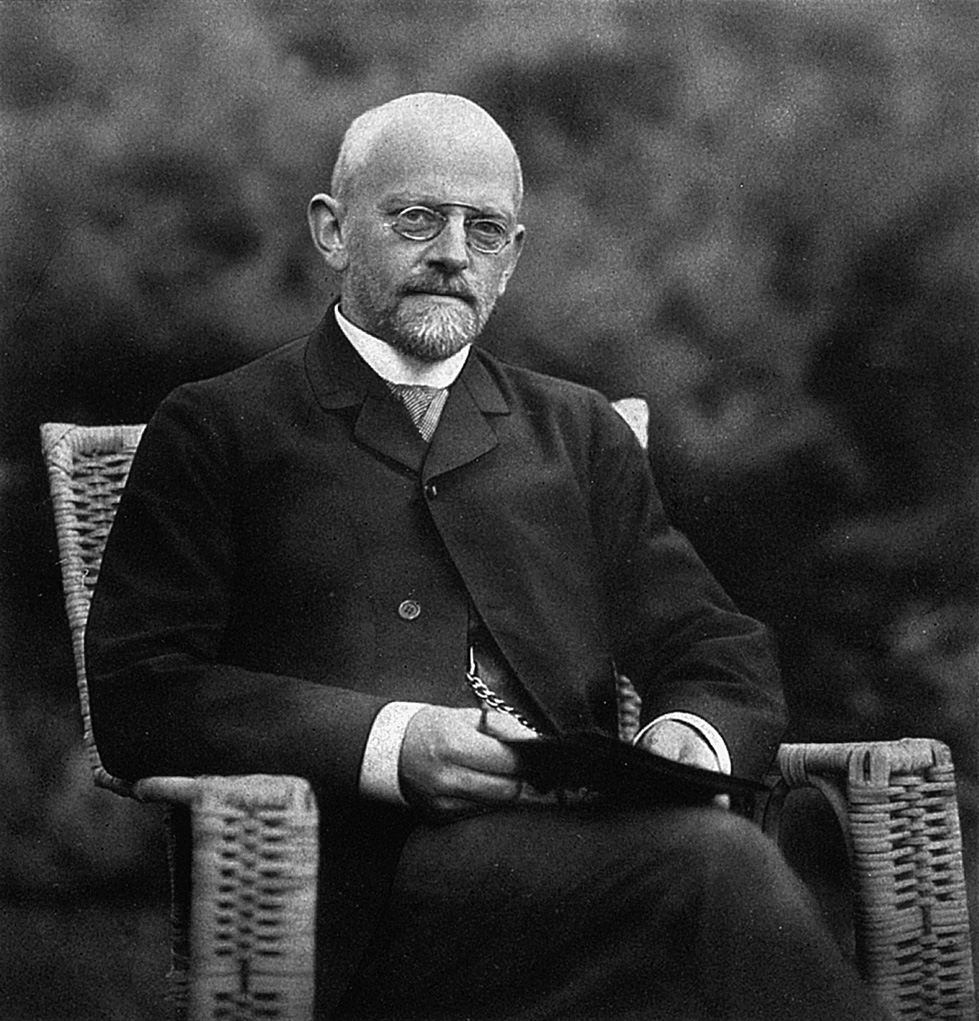
German mathematician David Hilbert
But the scientist's ambitions extended far beyond the mere science of numbers. In his article "Cognition of Nature and Logic", Hilbert wrote the following:
"The main idea is to formulate a few statements, called axioms, in vast fields of science, in order to then build the whole edifice of theory on their foundation in a purely logical way."
The mathematician seriously believed that all conceivable disciplines, including natural sciences, are subject to axiomatization and formalization. And the development of a unified, algorithmic methodology of cognition could potentially give an unprecedented impetus to the development of science. Just imagine what heights humanity could conquer, if a “universal master key from the universe” appeared in the arsenal of scientists, a kind of higher methodology that allows calculating scientific discoveries! In our time, this could lead to the creation of something like the "Great Thinker" from "The Hitchhiker's Guide to the Galaxy" , moreover capable of not only answering questions asked, but also calculating the laws of the Universe not yet known in advance. In this world, there would be no barriers for reason, and humanity would acquire true omnipotence.
Frustration
However, Hilbert's ambitious plans to formalize the universe were never destined to come true. On September 7, 1930, at a regular mathematical congress organized by the Vienna Circle in Konigsberg (now Kaliningrad), 24-year-old Kurt Gödel made a report “On the completeness of logical calculus”, within which he announced two fundamental theorems refuting Hilbert's ideas.
In their primary form, Gödel's theorems dealt with the fundamental limitations of formal arithmetic. However, since practically every formal system uses basic arithmetic concepts to one degree or another, Gödel's theorems turned out to be valid for many other branches of science. For this reason, two statements of each of the theorems are given below.
Gödel's first theorem (incompleteness theorem)
For arithmetic: if formal arithmetic is consistent, then there is an irreducible and irrefutable formula in it.
Generalized: every consistent axiomatic theory contains statements that can neither be proved nor refuted by the means of this theory itself.
Gödel's second theorem (contradiction theorem)
For arithmetic: if formal arithmetic is consistent, then some formula is not deducible in it that substantively asserts the consistency of arithmetic.
Generalized: the consistency of any axiomatic theory cannot be proved by the means of this theory itself.
This performance was not planned in advance and produced the effect of an exploding bomb in scientific circles, making Gödel a world celebrity overnight. This is not surprising, because in fact the mathematician proved that all research within the framework of the "Göttingen Program" was in vain, and further work on it was meaningless, since the three key postulates underlying it turned out to be initially false.
A year later, an article entitled "On Fundamentally Undecidable Provisions in Principia Mathematica and Related Systems", containing proofs of both theorems, was published in the Austrian scientific journal "Monatshefte für Mathematik und Physik" ("Monthly of Mathematics and Physics"). And although the proof of the second theorem was given only in the form of a general idea, it was so logical and obvious that no one had the slightest doubt about its reliability.
To David Hilbert's credit, it must be said that the scientist was the first to recognize the value of Gödel's scientific works, agreeing that his entire program of formalizing the foundations of mathematics requires a radical revision. Moreover, it was in the second volume of "Foundations of Mathematics", which was published in 1938, that complete proofs of both theorems were first presented. In the preface to the book, its authors noted that to achieve their goals, finite methods alone, alas, are not enough, adding transfinite induction to the number of necessary logical means .
Although 90 years have passed since the appearance of Gödel's theorems, scientists have not come to an unambiguous opinion in assessing their influence both on mathematics itself and on the further development of the fundamental sciences. Many people to this day share the position of Bertrand Russell, who said that according to the Hamburg account, nothing has changed fundamentally. Although Gödel's work had a tremendous impact on the formation of modern mathematical logic, nevertheless, outside of this discipline, mathematicians continue to deduce and prove theorems in the same way as before.
Interestingly, Gödel himself generally shared Russell's opinion. Parrying accusations of treacherous destruction of the foundations of mathematical science, he replied that his theorems only led to a reassessment of the role of personality and human intuition in those areas where the laws of logic had previously ruled undividedly, while the foundations of the foundations were and remained unshakable
As for the utopian idea of a clear formalization and algorithmization of scientific knowledge, on which the works of Gödel, in fact, put a bold cross, many scientists find such a concept in principle meaningless. No matter how tempting the mainframe may look, endlessly generating and proving more and more new theorems, the epithet "mathematical spam", invented by the Russian and French mathematician Alexander Chenes, is best suited for the computational products of such a supercomputer.
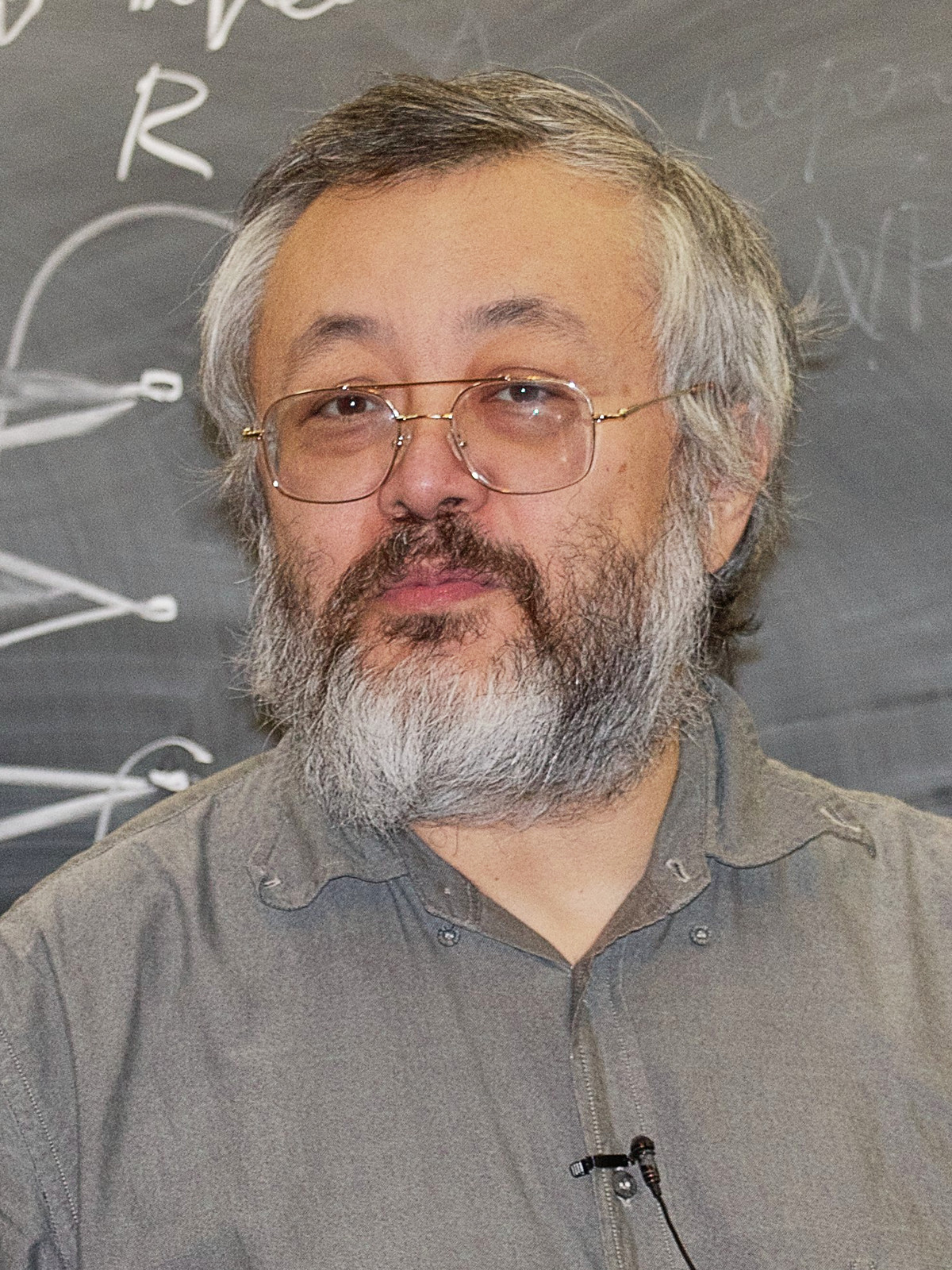
Alexander Shen, Senior Research Fellow at LIRMM CNRS, Associate Research Fellow at the Higher School of Economics
After all, not only the very formulation of a particular theorem and its proof are important for both mathematics and science in general, but, and this is the main thing, its meaning, which makes it possible to establish a relationship between different entities and understand in which direction to move on and what practical application can be found for the knowledge gained. In the absence of such an understanding, the value of disparate theorems and discoveries generated on the basis of formalized rules tends to zero.
Gödel's theorems made scientists think about the limited knowledge of a person about his own mental capabilities. After all, his works can be considered as an indirect confirmation that human thinking is by no means limited by formal computational frameworks, but also includes a hitherto unknown, "non-computational" sphere, the manifestation of which is intuition and sudden insights.
One of the most consistent proponents of this point of view was the British physicist and mathematician, the 2020 Nobel Prize laureate Roger Penrose. You may not be familiar with his work, but you almost certainly heard (or maybe played with one of its variations as a child) about the Penrose mosaic - a non-periodic, repeatable mosaic consisting of only two diamond-shaped elements.
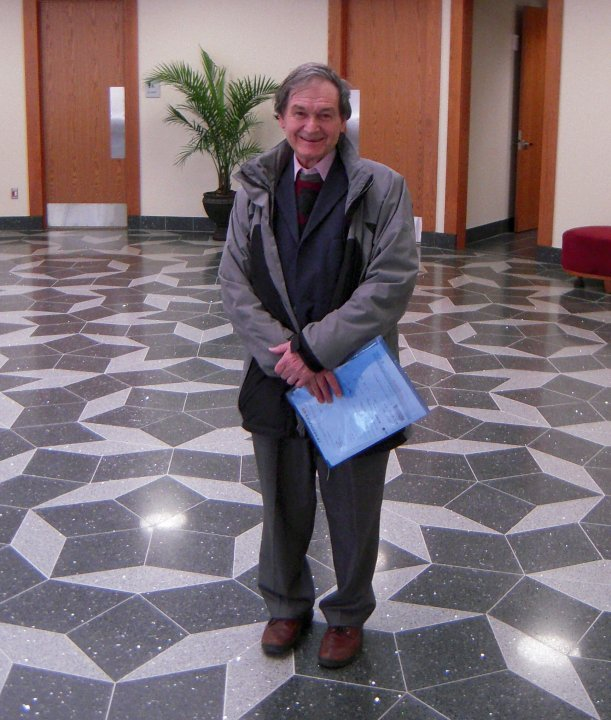
British physicist and mathematician Roger Penrose stands on a floor paved with a mosaic invented by him.
In 1989, Roger Penrose published a very entertaining popular science work "The New Mind of the King", the title of which is nothing more than a reference to the tale of Hans Christian Andersen "The New Dress of the King ", Which tells the story of a monarch who became a victim of a cruel deception, but did not want to admit it in any way, so as not to drop his dignity. In this book, Penrose expressed the opinion that human consciousness is not purely algorithmic, and the processes occurring in it can be thoroughly explained only with the involvement of the postulates of quantum physics (in particular, such a phenomenon as the von Neumann reduction). Subsequently, Penrose, together with neuroscientist Stuart Hameroff, developed the theory of quantum neurocomputing based on the Orch-OR model of consciousness, in which brain activity was viewed as not so much a biochemical process as a quantum process. This theory was detailed in the next book by Roger Penrose, Shadows of the Mind.
An important consequence of Penrose's reasoning is the fundamental impossibility at this stage of the development of computing technology to create the so-called "strong artificial intelligence" - AI with consciousness and self-awareness, the ability to empathy and its own motivation, that is, like a person. Since everything that modern computers and algorithms are capable of is only a more detailed and effective modeling of the formal-logical activity of the human brain, the appearance of a full-fledged, "live" AI, one should not expect even in the case of a multiple increase in computing power: such a result will be achieved only after a radical revision of views on the structure and principles of the work of consciousness. Perhaps, in the distant future, humanity will be able to solve this problem. But will those rememberwho will be able to make such a grandiose scientific breakthrough, the name of Kurt Gödel, the one who managed to make a person look differently not only at the world around him, but also at himself?
PS
One can endlessly talk about Kurt Gödel, about his works and his worldview - neither an article nor a whole book will be enough for that. For everyone who would like to get to know more about the way of thinking and the legacy of the brilliant scientist, we recommend starting with the work of the American mathematician and science fiction writer Rudy Rucker "Infinity and Consciousness", the original of which is in the public domain on the writer's official website . Here you will find not only detailed explanations and proofs of incompleteness and inconsistency theorems, but, most importantly, the author's personal impressions from communication with Kurt Gödel, which will help you to feel and understand much better what this amazing person lived and breathed.
Cloud servers from Macleod are fast and secure.
Register using the link above or by clicking on the banner and get a 10% discount for the first month of renting a server of any configuration!
